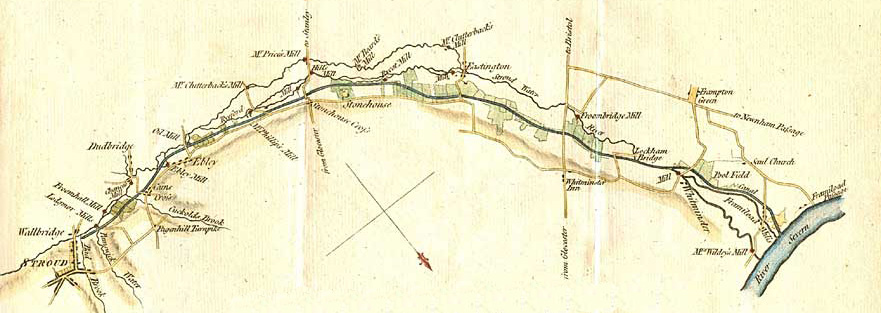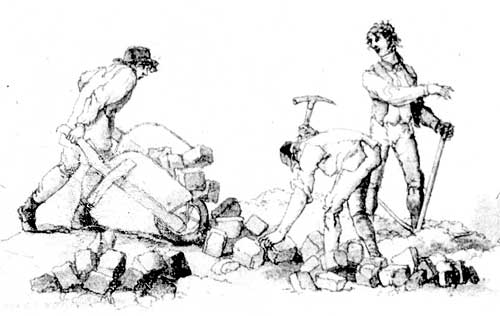After earlier attempts to link Stroud to the River Severn did not prosper, the Stroudwater Canal was built between 1775 and 1779 by navvies digging out the channel and craftsmen constructing the locks and bridges.
Work started at Framilode in 1775, supposedly under the authority of a 1730 Act of Parliament that had authorised making the River Frome navigable from Framilode on the River Severn to Wallbridge, Stroud. However, there was strong opposition from local mill owners who feared there would be less water to power their mills. One mill owner (who was also a land owner) threatened to sue the Company for trespass, and negotiations proved fruitless. So the Company was forced to obtain a new Act in 1776 which included provision for compensation if mill operation was adversely affected.



The project was run by an elected Committee of local shareholders (known as proprietors) who employed a Surveyor to oversee the work and a Clerk to make the payments. The Committee agreed the purchase of the many separate pieces of land needed, and they approved contracts for the supply of materials, craftsmen and labourers. Employed initially as Clerk, Benjamin Grazebrook also took a close interest in practical matters, and he eventually took over the surveyor's role as well.
The canal was dug by navvies using picks, spades and wheelbarrows. Bricks for the locks and bridges were made in temporary kilns from clay found nearby, and timber for the lock gates and stone where needed were shipped in along the canal as far as it had been completed. For a note about brick making along the Stroudwater Canal, read Brick Making.
The canal was formally opened on 21 July 1779, and barges started to bring coal and other goods to Stroud at a much reduced cost. As toll income grew, the Company was able to spend money on improving some structures and providing houses for some of its employees.
For a detailed account of the work involved in planning and building the canal (based on a wide range of sources), see The Stroudwater Canal by Michael Handford (1979).
Information about Building the Canal can be found by searching the Minute Book pages in the Archives section of this website. Additionally, a list of relevant documents that can be consulted at Gloucestershire Archives can be found in the Subject Listings page under the heading Building the Canal.
Found in the Archive
In April 1777, Mr Bough recommended making 500,000 bricks at or near Bonds Mill for the use of the bridge and locks between there and Chippenham Platt. (D1180/1/1 p125)